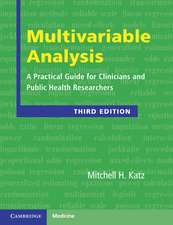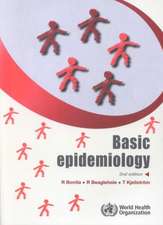Introduction to Statistical Methods for Biosurveillance: With an Emphasis on Syndromic Surveillance
Autor Ronald D. Frickeren Limba Engleză Hardback – 24 feb 2013
Preț: 424.69 lei
Preț vechi: 447.05 lei
-5% Nou
Puncte Express: 637
Preț estimativ în valută:
81.27€ • 84.34$ • 67.93£
81.27€ • 84.34$ • 67.93£
Carte tipărită la comandă
Livrare economică 17-31 martie
Preluare comenzi: 021 569.72.76
Specificații
ISBN-13: 9780521191340
ISBN-10: 0521191343
Pagini: 411
Ilustrații: 143 b/w illus. 3 maps 30 tables
Dimensiuni: 162 x 242 x 26 mm
Greutate: 0.66 kg
Ediția:New.
Editura: Cambridge University Press
Colecția Cambridge University Press
Locul publicării:New York, United States
ISBN-10: 0521191343
Pagini: 411
Ilustrații: 143 b/w illus. 3 maps 30 tables
Dimensiuni: 162 x 242 x 26 mm
Greutate: 0.66 kg
Ediția:New.
Editura: Cambridge University Press
Colecția Cambridge University Press
Locul publicării:New York, United States
Cuprins
Part I. Introduction to Biosurveillance: 1. Overview; 2. Biosurveillance data; Part II. Situational Awareness: 3. Situational awareness for biosurveillance; 4. Descriptive statistics for displaying the situation; 5. Statistical models for evaluating the situation; Part III. Early Event Detection: 6. Design and performance evaluation; 7. Univariate temporal methods; 8. Multivariate temporal methods; 9. Spatio-temporal methods; Part IV. Putting It All Together: 10. Simulating biosurveillance data; 11. Applying the temporal methods to real data; 12. Comparing methods to better understand and improve; 13. Frontiers, open questions, and future research.
Notă biografică
Descriere
Presents basic and advanced methods with a focus on demonstrated added value for a broad class of public health surveillance problems.





















